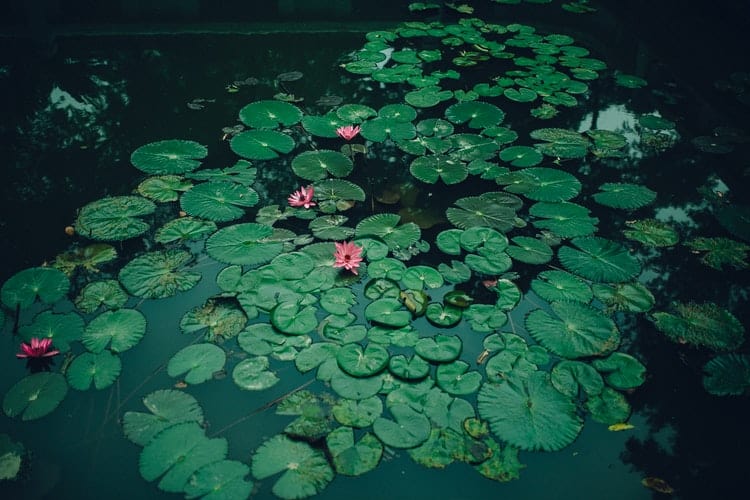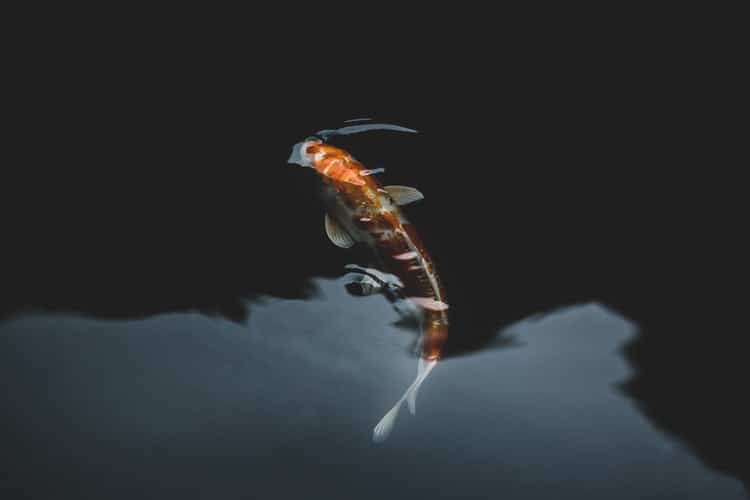You have finally set up your garden exactly how you like it. With some creativity, you decorated it to perfection. With the addition of an outdoor water fixture, you have created a perfect oasis of peace and tranquility.
There’s just one thing missing.

Your fountain or pond could use some fish. There are some practical reasons to have fish in your outdoor water fixture, but also just having them will add a more natural touch.
Watching your fish while you enjoy your lazy summer days will enhance the whole experience. How can you make sure your fish live in the right environment so they thrive?
Outdoor fountains at The Soothing Company make an ideal home for your fish, but you’ll need this guide to be able to take care of them. Read on for the tips!
Ideal conditions for fish
Not every fish can be put in an outdoor water fixture. There needs to be the right environment for each species you plan to have.
Most fish are going to need the water to be relatively warm. An ideal temperature is between 65°F and 75°F for a fish to do well. Obviously, this is not an issue in the spring and early fall, but in the dead of summer, it can be much warmer than that in a shallow pond or fountain.
And, in the winter, you will need to either bring the fish inside or put a water heater in the fixture to keep them from freezing.
Your water should also not be from a garden hose as it will contain chlorine unless you are on well water or have a filter. Rain water is best if you don’t have either of those.
Best types of fish
There is actually quite a wide choice of fish for your pond or fountain and which one is best will depend on your circumstances.
Koi and goldfish are popular for their beauty and have a tradition in Japanese gardens. They are good when you have a deeper pond as they need space. They are hardy fish and can handle cooler waters.
They do produce a lot of waste, so a pond filter or another species of fish that cleans that waste is needed.
If you are looking for a fish that takes care of the mosquitoes and other insect larvae then you should focus on guppies and minnows. These are small fish that can handle a more shallow environment like a fountain and will eat up any insects they find in the water so you aren’t dealing with pesky bugs by having the water fixture.

Acclimate your fish
As anybody with an aquarium can tell you, you can’t just dump your fish into the pond or fountain. They need to be acclimated first so they aren’t shocked. Failing to do this may kill your fish.
If you already have the pond or fountain filled with water, take a bucket and half fill it with water from there. Then the other half should be treated with aquarium water. Put the fish in there for at least an hour to let them get used to some of the elements of the pond water.
Before you can put the fish right into the fixture, you will need to put the fish in a plastic bag filled with the water from the bucket. Tie or seal the bag tightly and then place the bag with the fish in it into the fixture. This will allow the fish to gradually acclimate to the temperature of the pond without shocking it fromt he change in temperature.
Keep your fish protected
Your fish are going to look like the perfect snack for your neighbor’s cat or from any other creatures around your home. There will likely be some birds of prey that will see them as easy pickings. Then, raccoons and other pests may also take advantage.
When you have smaller fish that reproduce quickly, you probably don’t have to do much to protect them as you will still have plenty of fish.
But larger, slow growing fish like koi do need some protection.
If you have a pond, give them places to hide. Create some rock shelves that they can swim underneath at times when they see a potential predator. If you have a fountain, then a net over the top of it may work to keep predators away and still be subtle enough that the look isn’t ruined.
